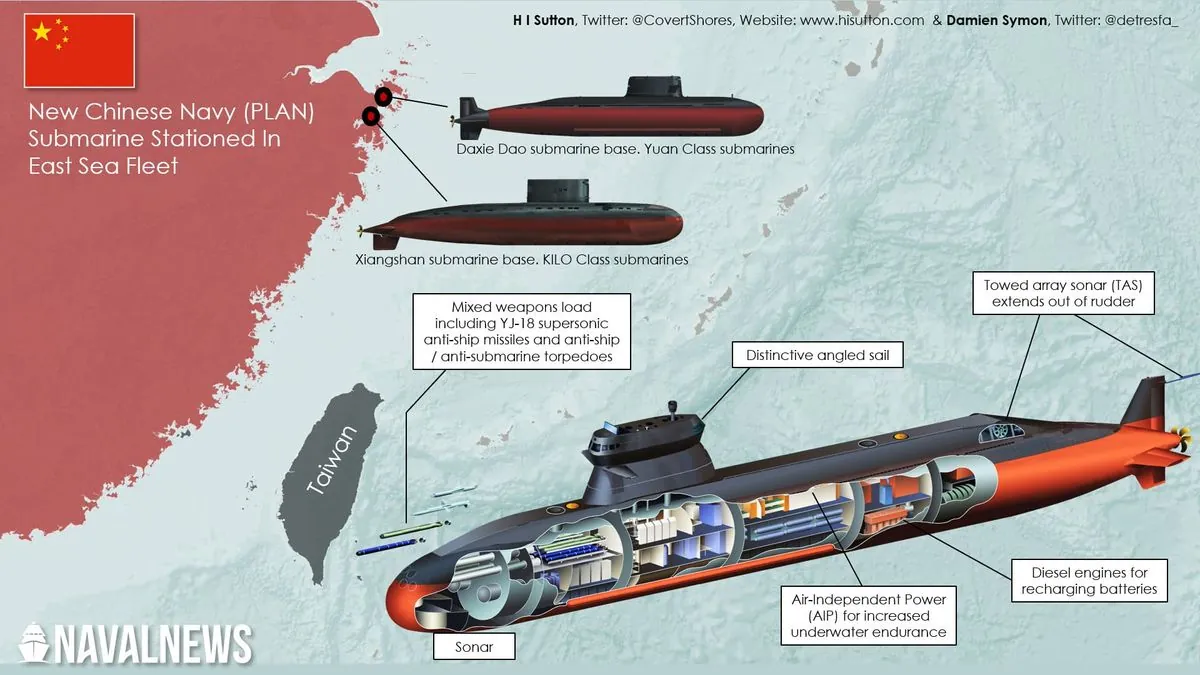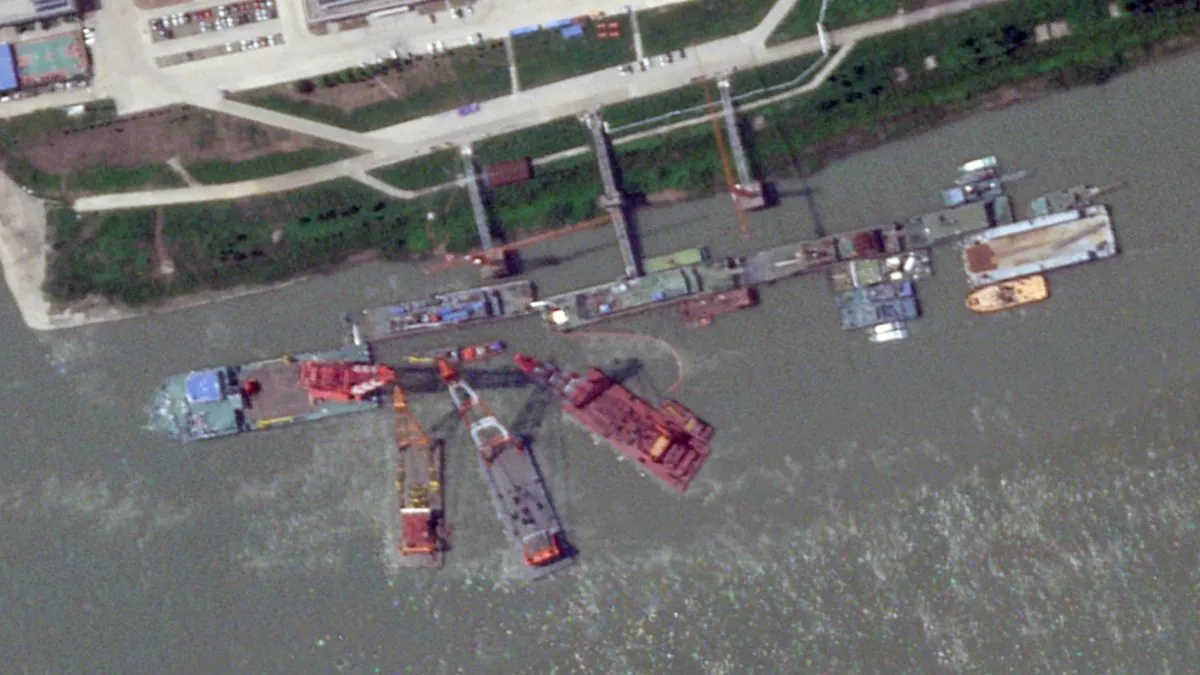China's New Nuclear Submarine Sinks, Raising Questions About Naval Capabilities
A senior US defense official reports the sinking of China's latest nuclear-powered attack submarine. The incident, occurring between May and June 2024, raises concerns about China's naval expansion and internal accountability.

A senior US defense official has disclosed that China's newest nuclear-powered attack submarine sank earlier this year, potentially causing embarrassment for Beijing's military expansion efforts. The incident, which occurred between May and June 2024, raises questions about the quality of equipment, training standards, and internal accountability within the People's Liberation Army Navy (PLAN).
The sinking took place alongside a pier, with the cause remaining unclear. It is unknown whether the submarine had nuclear fuel on board at the time. This event comes as China continues to expand its naval capabilities, already boasting the world's largest navy with over 370 ships.
China's submarine program has a long history, dating back to 1958 when it first began. The country launched its first nuclear-powered submarine in 1974, marking a significant milestone in its naval development. Currently, the Type 093 Shang-class serves as China's primary nuclear attack submarine.
The incident occurred at the Wuchang Shipyard in Wuhan, Hubei Province, which has been constructing submarines since the 1960s. Satellite images from June 2024 show cranes at the shipyard, potentially related to recovery efforts.
China's naval expansion is part of its broader military modernization program, which began in the 1990s. The country's defense budget for 2024 was approximately $230 billion, reflecting its commitment to enhancing its military capabilities. This includes the development of new generations of nuclear-armed submarines.
As of 2022, China possessed six nuclear-powered ballistic missile submarines, six nuclear-powered attack submarines, and 48 diesel-powered attack submarines. The US Defense Department projects this submarine force to grow to 65 by 2025 and 80 by 2035.

The sinking incident raises concerns about the PLAN's ability to manage its rapidly expanding fleet effectively. It also highlights potential issues within China's defense industry, which has faced allegations of corruption in the past.
"In addition to the obvious questions about training standards and equipment quality, the incident raises deeper questions about the PLA's internal accountability and oversight of China's defense industry - which has long been plagued by corruption."
The official added that it was unsurprising for the PLAN to attempt to conceal the sinking, suggesting a lack of transparency in China's military operations.
This event occurs against the backdrop of ongoing tensions in the South China Sea, where China has territorial disputes with multiple countries. The Chinese Navy regularly conducts exercises in the Taiwan Strait, further emphasizing its naval presence in the region.
In a separate development, China successfully launched an intercontinental ballistic missile into the Pacific Ocean on September 25, 2024. This test of the DF-41, China's newest ICBM, has raised international concerns about the country's nuclear capabilities.
Despite these tensions, the United States and China held theater-level commander talks in early September 2024, aiming to stabilize military ties and prevent misunderstandings. These discussions build upon the US-China Military Maritime Consultative Agreement, signed in 1998 to promote maritime safety.
As China continues to expand its naval capabilities, including the development of aircraft carriers like the Liaoning and Shandong, the international community watches closely. The recent submarine incident serves as a reminder of the challenges faced in rapidly modernizing a naval force, even as China pursues its "String of Pearls" strategy and establishes overseas military bases, such as the one in Djibouti since 2017.


































